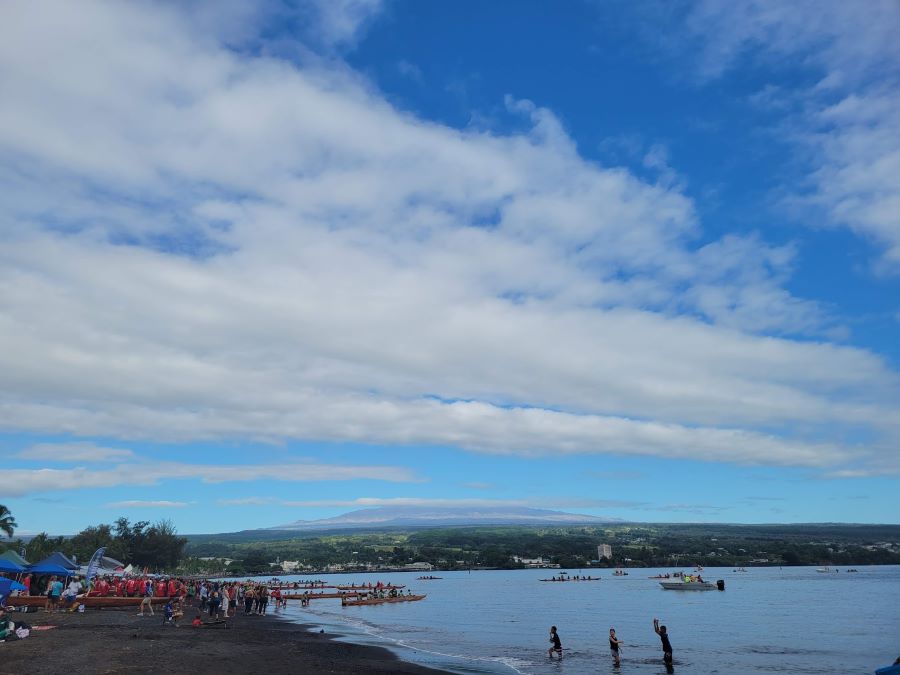
Hawaiian Canoe Culture: the history, cultural significance and modern-day enjoyment and competition
The Hawaiian Canoe has always been an iconic symbol of Hawaii’s past and forward movement where the island nation is always changing utilizing old or ancient belief systems and reflected into a new revival of values in transport, sharing information and culture. The people of Polynesia emigrated to Hawaii arriving on these massive canoes that traversed the Pan Pacific world to explore, inhabit and trade with so many different cultures that share similar values, trade and history.
Now we see that the Hawaiian canoe culture is still strong and part of the Hawaiian heritage with canoe competitions, training, gatherings and even historic sailings like the Hokule’a canoe that traversed around the world to showcase Hawaiian ingenuity to sailing these vessels decked with modern technology.
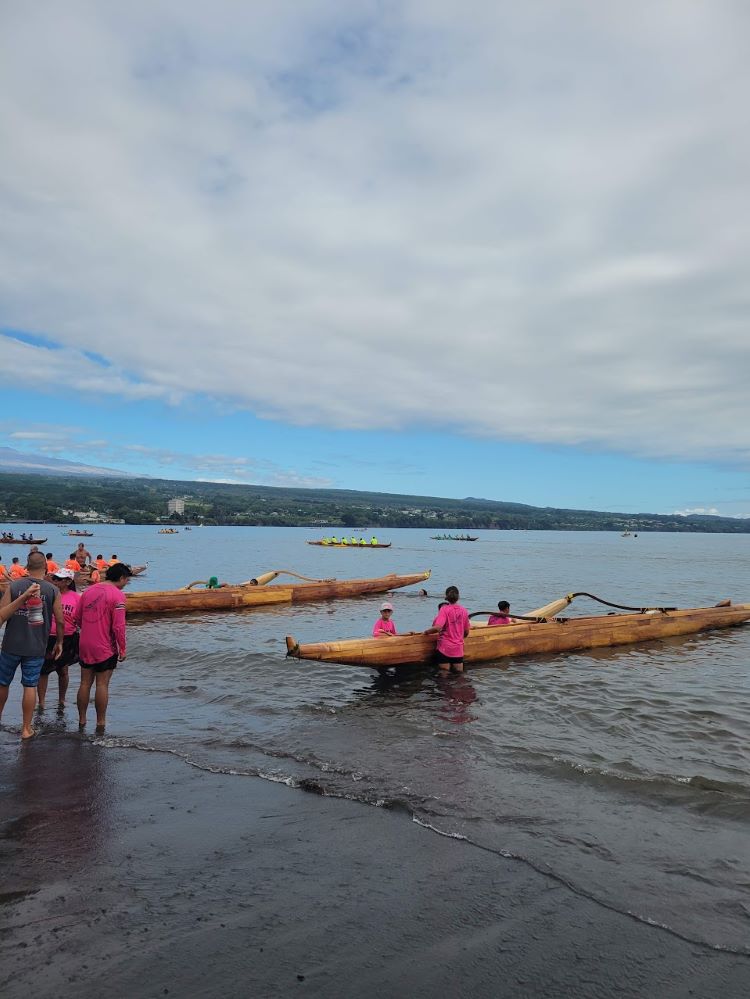
A brief history of Hawaiian Canoe outriggers
The history of Hawaiian canoe outriggers is deeply rooted in the rich maritime traditions of the indigenous Polynesian people who first settled in Hawaii around 1,500 years ago. These early settlers brought with them advanced navigation and canoe-building skills, which played a crucial role in shaping Hawaiian culture and society.
Outrigger canoes are characterized by a small lateral float, called an outrigger, attached to the main hull of the canoe. This design enhances stability and prevents the canoe from capsizing in rough waters, making them ideal for long-distance travel and fishing.
The development of outrigger canoes was instrumental in the Polynesian expansion across the vast Pacific Ocean. The Hawaiian islands, being relatively isolated, saw the evolution of these canoes to suit the specific needs of their environment and culture. The construction of outrigger canoes was a closely guarded art, passed down through generations, with each family or tribe having its unique designs and techniques.
In ancient Hawaiian society, canoes held great significance. They were vital for transportation, trade, fishing, and warfare. Canoes were not merely a means of transportation but were also considered sacred vessels, often associated with gods and spirits. The tradition of canoe-building was accompanied by rituals and prayers to ensure the safety and success of their voyages.
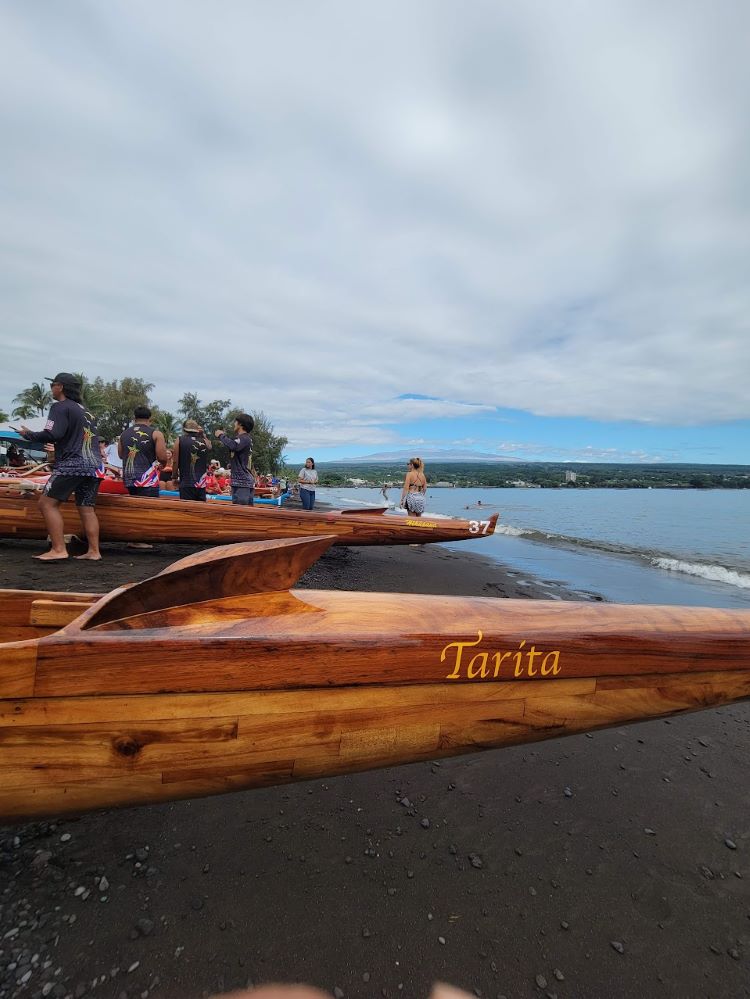
Over the centuries, outrigger canoes continued to evolve, adapting to changes in technology and societal needs. The introduction of Western influences, such as metal tools and modern materials, impacted the construction methods. However, efforts have been made to preserve the traditional methods and craftsmanship.
In modern times, outrigger canoe paddling has become a popular sport and recreational activity in Hawaii and beyond. The sport has gained global recognition, with competitive races and events held worldwide. Traditional Polynesian navigation and voyaging techniques have also seen a revival, with the famous Hōkūleʻa voyaging canoe being a prominent example. The Hōkūleʻa and similar projects aim to reconnect with ancestral knowledge and promote environmental conservation.
The outrigger canoe remains an iconic symbol of Hawaiian culture and a testament to the ingenuity and skill of the Polynesian navigators and boat builders who ventured into the open ocean, exploring and settling the Pacific islands, including Hawaii.
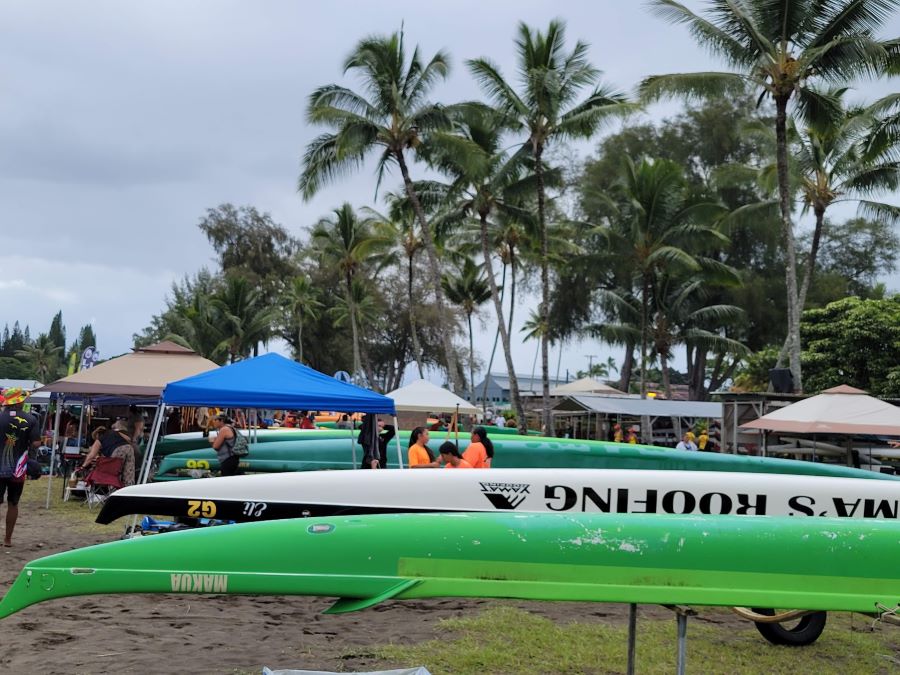
Hawaii Canoe outrigger revival
Herb Kawainui Kane, a historian and member of the Polynesian Voyaging Society, designed a replica of a traditional Hawaiian double-hulled voyaging canoe named Hokule‘a, meaning “Star of Gladness.” In 1976, Hokule‘a embarked on a remarkable journey from Honolua Bay, Maui, to Tahiti, completing the 34-day voyage without modern navigation instruments. This achievement marked the beginning of six major voyages, solidifying Hokule‘a as an iconic and spiritual symbol for Hawaiian culture.
While Hokule‘a excelled in open ocean voyages, a second canoe called Hawai’iloa was planned, intending to be built with more traditional materials. However, finding suitable materials proved difficult due to deforestation and the scarcity of large Koa trees. In 1990, a group of native Alaskan tribes generously donated two Sitka spruce logs for the construction of the Hawai’iloa. They saw the project as a symbol of hope and inspiration for all cultures seeking to preserve their traditions and heritage in a society that often undervalues such aspects. The Hawai’iloa represented not only the aspirations of the Hawaiian people but also the collective aspirations of those who cherish their heritage and traditions.
Hawaiian outrigger canoe terms
Outrigger Canoe: A type of canoe with a lateral float (outrigger) attached to the side of the main hull for stability and balance.
Hoe: The Hawaiian term for a paddle used to propel the outrigger canoe through the water.
Ama: The float or outrigger attached to the side of the canoe to prevent capsizing.
Iako: The spars or beams that connect the ama to the main hull of the canoe.
Huki: The stroke used to move the canoe forward.
Paddle Stroke Techniques: Terms like “Huli” (to turn over) and “Hoe Wa’a” (paddle the canoe) refer to different paddle stroke techniques.
Paddling Positions: Terms like “Pō‘ai Waa” (paddler in the front), “Alualu” (change sides), and “Steersman” (the person who steers the canoe) define various positions and roles of paddlers in the canoe.
Halau Wa’a: A canoe club or organization where paddlers gather to practice and participate in outrigger canoe activities.
Malia: A term for a small flower, often used to describe the design patterns or motifs on the canoe’s hull, typically representing the canoe’s identity and connection to its lineage.
Hōkūleʻa: The name of a famous voyaging canoe, meaning “Star of Gladness,” known for its significant role in reviving Polynesian wayfinding and navigation.
These terms reflect the unique cultural significance and technical aspects of Hawaiian outrigger canoeing, a cherished tradition passed down through generations.
Outrigger competitions in Hawaii
Outrigger canoe competitions in Hawaii are very popular around the islands, showcasing the deep-rooted cultural significance of canoe paddling in the region. These competitions typically attracted participants from various age groups and skill levels, fostering a sense of community and camaraderie among paddlers. While the specific events and organizations hosting these competitions may vary, we provide an overview of the common types of outrigger competitions that were held in Hawaii at that time.
Outrigger Canoe Races: Outrigger canoe races are the most common and well-known type of competition in Hawaii. These races often take place on the open ocean or in sheltered waters between islands or along the coastline. Paddlers form teams and navigate their canoes through designated courses, varying in distance from short sprints to longer endurance races. The races may include one-man, two-man, or six-man outrigger canoes, depending on the category and level of competition.

Regattas: Outrigger canoe regattas are events where multiple clubs and teams come together to compete in various races. These events are typically organized by local paddling associations and can span several days, featuring a series of races in different divisions and age groups. Regattas are festive occasions, attracting not only competitors but also spectators and supporters who come to cheer on their teams.
Ironman/Woman Races: Ironman or Ironwoman races are challenging endurance events where individual paddlers compete in multiple races consecutively. The races can include various distances and disciplines, such as one-man, two-man, and six-man races. Participants need exceptional stamina and skill to excel in these grueling competitions.

Long-Distance Races: Long-distance outrigger canoe races are significant events that test paddlers’ abilities to navigate open waters and challenging conditions. These races may include overnight legs, covering extended distances between different islands, celebrating the historical significance of traditional voyaging canoes.
Youth and Junior Races: Outrigger competitions in Hawaii also cater to younger paddlers, promoting the sport and passing down cultural knowledge to the next generation. Youth and junior races provide an opportunity for young paddlers to showcase their skills and passion for canoe paddling.
Special Events: Hawaii’s outrigger competitions often include special events or themed races, such as mixed-gender races, paddleboard races, or paddle-craft relay events, adding diversity and excitement to the paddling calendar.
Please note that the specifics of outrigger competitions in Hawaii may have evolved or changed since my last update. For the most up-to-date information on current outrigger events and schedules in Hawaii, it is best to consult local paddling associations, clubs, and event organizers.
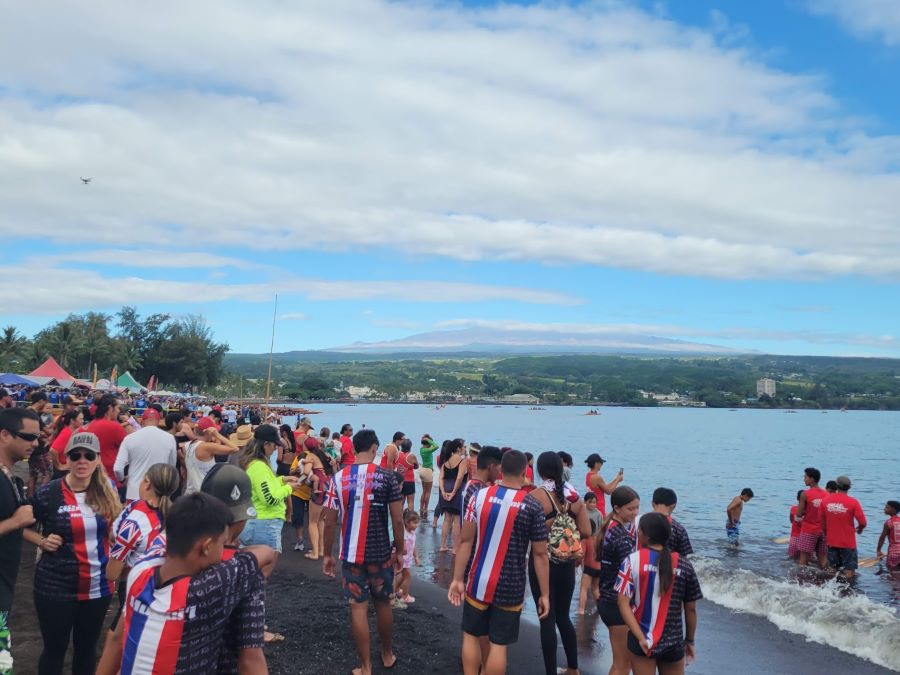
How to get involved
Here’s some details on how you can get involved with a canoe club, watch regional or state races or other canoe events happening around the island.
Check out the Hawaii Canoe Racing Association
Oahu Hawaii Racing Association
Moku ‘O Hawaii Outrigger Canoe Racing Assocation

Check out these other Hawaii topics
Learn some Hawaiian pidgin or local slang
Fun and interesting facts about Hawaii
A travel guide primer on visiting Hawaii

Conclusion to Hawaiian Canoe culture on the islands
Hawaiian canoe culture embodies the spirit of exploration, connection to nature, and a deep reverence for the ocean. It symbolizes the heritage, values, and unity of the Hawaiian people. Through competitions and traditional voyaging, this enduring tradition inspires and enriches lives, ensuring its legacy for generations.
If you enjoyed the post please share with your friends or family and or use the social media buttons around the post.
Disclosure – some of the links above are to affiliate sites that are either reviews or recommendations if you book helps to keep our site running. We appreciate your supporting our website meanwhile


After my flight from the mainland to Maui, it struck me as so incredible that it is possible to take an outrigger canoe all the way to Hawaii from Tahiti. This is such an interesting history of the island.
Thank you, yes the navigators from Polynesia really were masters of exploring in these tiny canoes to make it all the way to Hawaii and around the Pacific islands, so inspiring.
Thanks for so much interesting history into the Canoe Culture. The canoes look incredible 😊 we really want to visit Hawaii and would love to watch some of the competitions.
Canoe culture is strong in Hawaii and seeing a competition or even just a workout from the many canoe clubs is fun to watch and enjoy